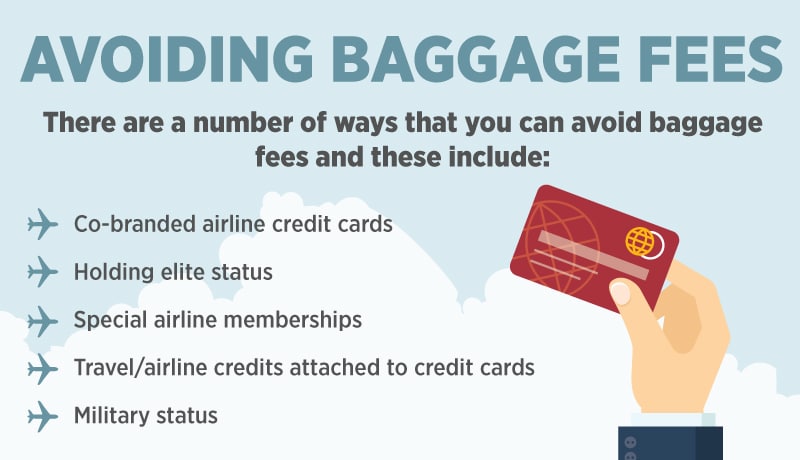Navigating Airline Baggage Policies: Tips for Avoiding Fees is more than just a topic of casual interest for travelers; it’s an essential guide to circumventing unforeseen expenses. In today’s evolving world of air travel, comprehending the intricacies of airline baggage policies has gained paramount importance. Not only does this knowledge give travelers the tools to pack efficiently, but it also aids in preventing unexpected charges at the check-in counter. Ignorance, in this sphere, can lead to substantial financial implications.

Overlooking, or even worse, dismissing the significance of these policies, can lead travelers to incur surcharges that they could have adroitly avoided. Airlines constantly update and modify their regulations, so staying up-to-date with current guidelines ensures travelers stay on track.
In sum, understanding and adeptly Navigating Airline Baggage Policies: Tips for Avoiding Fees plays a pivotal role in guaranteeing a hassle-free, cost-effective journey.
Here is the link for Fun & Functional Kids’ Suitcases.
The Evolution of Airline Baggage Policies
The aviation industry has seen a monumental shift in how it operates, and nowhere is this more evident than in the Navigating Airline Baggage Policies: Tips for Avoiding Fees. Historically, airline luggage allowances were a straightforward affair. Passengers were generally allowed a generous checked baggage limit, often without additional fees. It was combined with a sizable cabin baggage, making air travel a seemingly lavish affair.
However, the paradigm began to change as the skies grew busier and airlines sought to optimize profits. The advent of low-cost carriers brought a revolutionary change in the modus operandi. Luggage allowances became restricted, and what was previously complimentary now came with a fee. The ‘pay for what you use’ ethos became the guiding principle.
This seismic shift wasn’t merely about profitability; it was an attempt to streamline operations and increase efficiency in baggage handling. As the quantum of travelers surged, the sheer volume of luggage meant a robust and intricate system was necessary to handle it all. Today’s policies, while sometimes vexing for the unprepared traveler, are a testament to the changing landscape of aviation, balancing customer service with operational difficulties. The key, as always, lies in Navigating Airline Baggage Policies: Tips for Avoiding Fees with astuteness and foresight.
Understanding the Basics: Terminology Decoded
Navigating Airline Baggage Policies: Tips for Avoiding Fees necessitates a deep comprehension of core terminologies in the intricate world of air travel. Let’s decode the essentials:
Checked baggage vs. carry-on:
At its most rudimentary, checked baggage refers to those pieces entrusted to the airline for transportation in the aircraft’s cargo hold. These bags, often larger, are checked in at the airline counter and retrieved at the destination’s baggage claim. Conversely, carry-on bags are those you bring into the cabin. They must fit under the seat in front of you or the overhead bins.
Personal items
What qualifies? Distinguished from your standard carry-on, a personal item is typically smaller. Think handbags, briefcases, or small backpacks. The quintessence of a personal item is its ability to fit snugly under the seat, providing immediate access during the flight.
Oversized and overweight bags
Key differences: While they may seem synonymous, they are distinct classifications in the baggage lexicon. ‘Oversized’ pertains to the bag’s length, width, and height. If a bag exceeds the airline’s stipulated size metrics, it’s oversized. ‘Overweight,’ as the moniker suggests, pertains to the bag’s heft. Bags tipping the scale beyond the designated weight limit fall into this category.
In essence, adeptly Navigating Airline Baggage Policies: Tips for Avoiding Fees mandates a clear grasp of these foundational terms, ensuring seamless, cost-effective voyages.
What leads to more fees for airline baggage
While a marvel of modern engineering, air travel has certain pitfalls, especially regarding luggage. While many travelers focus on Navigating Airline Baggage Policies: Tips for Avoiding Fees, it’s equally vital to recognize what can incur additional costs. Here are ten factors that frequently lead to escalating baggage fees:
Overpacking
It might seem obvious, but the allure of packing “just one more thing” often pushes baggage beyond weight limits, incurring extra fees.
Ignoring Size Specifications
While weight often grabs the limelight, the dimensions of your baggage—both checked and carry-on—can be just as consequential. Bags exceeding the stipulated dimensions attract surcharges.
Multiple Bags
Every additional bag often comes at a progressively higher cost. The second, third, or even fourth bag’s fees might be exponentially more than the first.
Last-Minute Additions
Making baggage decisions at the airport, rather than pre-booking online, usually comes at a premium.
Special Equipment
Items like sporting gear, musical instruments, or specialized equipment often carry unique fees, regardless of weight or size.
Ignoring Loyalty Benefits
Unaware of frequent flyer perks, many travelers might pay for services their loyalty status might cover.
Transiting Through Multiple Airlines
Different airlines have disparate policies. If you don’t cross-reference meticulously, airlines could slap you with fees on one leg of a multi-airline journey.
Inattentive to Seasonal Restrictions
Some airlines enforce stricter baggage policies during peak seasons to accommodate the high flux of travelers.
Bypassing Digital Resources
Today, myriad tools and platforms dedicate themselves to Navigating Airline Baggage Policies: Tips for Avoiding Fees. Travelers should consider these resources to become aware of potential savings.
Not Reviewing Policies for International Travel
International flights, especially those spanning different regions or continents, often have distinct baggage guidelines compared to domestic routes. Overlooking these nuances can be costly.
The intricate realm of airline baggage can be a minefield of potential charges. Travelers can avoid these problems with cautious planning and a sharp eye on the requirements, ensuring a more efficient and cheap journey.
Tips for Avoiding Fees
Embarking on an exhilarating journey can be quickly dampened by unforeseen baggage fees. Fortunately, mastering the art of Navigating Airline Baggage Policies: Tips for Avoiding Fees can shield travelers from such unexpected expenditures. Here are ten strategies to sidestep these charges:
1. Diligent Research
Dive deep into the airline’s baggage policies well in advance: Unearth nuances, limitations, and possible fee waivers to prevent last-minute surprises.
2. The Minimalist Approach:
The ‘less is more’ ethos resonates profoundly here. You lighten your load and financial burden by paring down your essentials and eliminating redundancies.
3. Precision Weighing
An ounce can make a difference. A reliable digital luggage scale aids in preempting any weight-based charges, ensuring you adjust your belongings before reaching the airport.
4. Maximizing the Personal Item Privilege
Many airlines provide leeway for a personal item in addition to the carry-on. Harness this opportunity by opting for a spacious yet compliant bag, packing it judiciously.
5. Engage in Loyalty Schemes
Loyalty often reaps the rewards. Regular engagement with a specific airline or frequent flyer program can usher perks, including enhanced baggage allowances.
6. Online Check-In Benefits
Modern problems require modern solutions. Some carriers offer concessions on baggage fees for those who opt for online check-in and prepayment.
7. Strategic Distribution
Are you traveling in a group? Diversify! Instead of burdening one suitcase, distribute belongings across multiple bags, ensuring each remains within permissible limits.
8. Versatility is Key
Items that can multitask are a traveler’s best friend. Whether it’s adaptable clothing or multi-purpose gadgets, such choices minimize the items you pack.
9. All-Encompassing Fare Choices
Sometimes, a comprehensive ticket, which integrates all fees, can be a more economical choice in the long run, even if it seems steeper initially.
10. Stay Abreast of Changes
The only constant is change. Regularly revisit airline websites or apps, ensuring you’re conversant with the latest baggage stipulations.
While fees may seem inevitable, astutely Navigating Airline Baggage Policies: Tips for Avoiding Fees can lead to significant savings, paving the way for a smoother travel experience.
How to navigate airline baggage policies
Navigating the labyrinth of airline regulations may intimidate many. However, with the right approach, you can transform Navigating Airline Baggage Policies: Tips for Avoiding Fees from a cumbersome chore into a straightforward endeavor. Consider these ten strategic methods to simplify this navigation:
-
Research in Advance
Thoroughly research your chosen airline’s baggage policies. Different carriers have different rules. You must arm yourself with the latest information.
-
Harness Technology
Use mobile apps or online platforms dedicated to Navigating Airline Baggage Policies: Tips for Avoiding Fees. They often provide real-time data, helping you stay updated.
-
Opt for Digital Check-in
Many airlines offer a reduced fee for checked baggage when you opt for online check-in. Plus, it saves you time at the airport.
-
Interact with Customer Service
If in doubt, speak directly to the airline’s customer service. Their firsthand knowledge often clarifies any ambiguities.
-
Understand Size and Weight
Always measure and weigh your bags. Investing in a luggage scale and measuring tape can save unexpected fees later.
-
Beware of Connecting Flights
If your journey involves multiple airlines, ensure you’re acquainted with the policies of each. Transitioning carriers might entail different baggage stipulations.
-
Prioritize Essential Items
Instead of overstuffing your bags, prioritize. Focusing on essentials reduces the risk of over-packing and subsequent fees.
-
Stay Updated on Policy Changes
Airlines occasionally tweak their baggage policies. Regular checks ensure you are aware of any recent alterations.
-
Leverage Frequent Flyer Status
Loyalty programs often come with baggage perks. If you’re a member of such a program, ensure you’re capitalizing on the associated benefits.
-
Read the Fine Print
Often, the overlooked details trip us up. Remember the terms and conditions, especially when booking discounted or promotional fares.
While airline baggage policies seem intricate, a strategic, informed approach ensures a seamless experience. With these steps in hand, Navigating Airline Baggage Policies: Tips for Avoiding Fees can become second nature for any traveler. Safe journeys ahead!
Conclusion
In wrapping up our exploration on Navigating Airline Baggage Policies: Tips for Avoiding Fees, it’s paramount to underscore the significance of proactive planning. The aviation world is constantly evolving, and being a step ahead can be the difference between a seamless journey and one riddled with challenges. Embracing the ethos of traveling light not only alleviates physical burdens but also provides a liberating mental clarity.
It paves the way to travel smart, ensuring that trips are cost-effective and devoid of unnecessary hindrances. As wanderlust beckons and new horizons call out, let’s remind ourselves to cherish the essence of travel. After all, the magic lies in embracing the journey, the experiences, and the memories and not getting trapped by the intricacies of baggage. Travel far, travel wide, but most importantly, travel unburdened.

Geraldine Keaton is your quintessential travel guide and storyteller, encapsulating the globe’s wonders on besttravelsuitcases.com. With a knack for immersive storytelling and actionable travel tips, she turns every journey into an inspiring narrative. Follow Geraldine for a blend of adventure, insights, and finesse to travel smart and stylishly.
